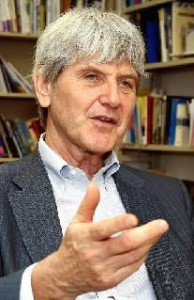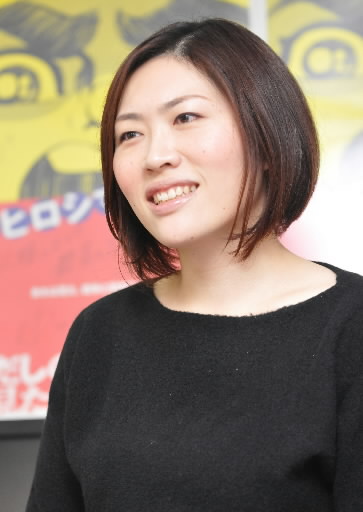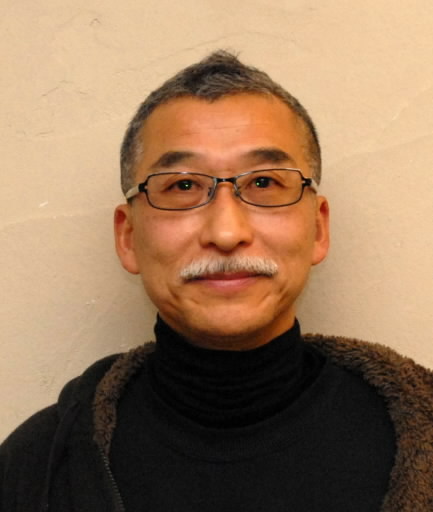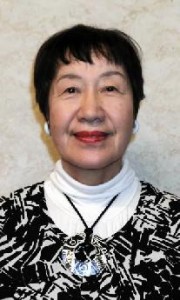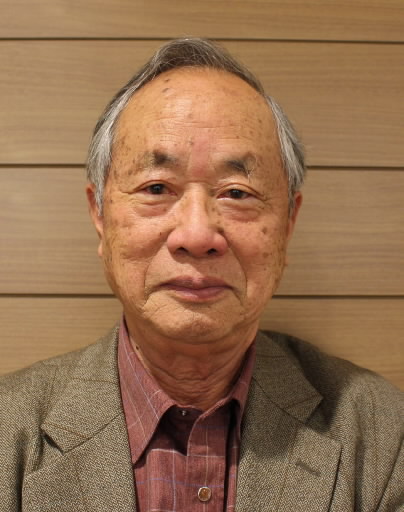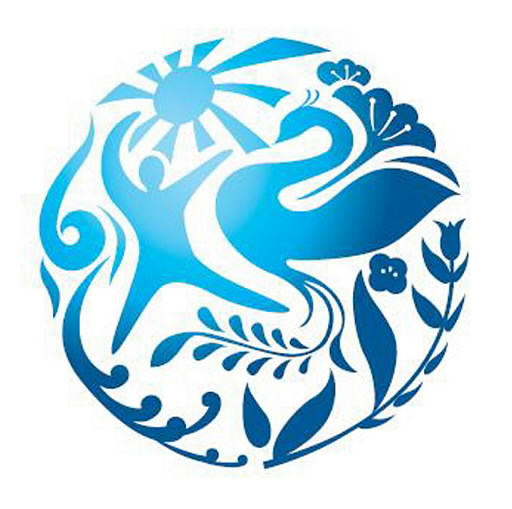Widening circle to convey hopes of Hiroshima: Hiroshima Peace Creation Fund’s “Peace Supporters” system
Mar. 12, 2014
by Rie Nii, Sakiko Masuda and Keiko Ando, Staff Writers
This year the Hiroshima Peace Creation Fund established a “Peace Supporters” system to convey more widely the city’s hopes for a peaceful society and the abolition of nuclear weapons. As of March 5, the new system had 421 individual and corporate members in 14 prefectures who had made donations totaling 2,117,333 yen. The entire amount will be put to use for the fund’s peace-related activities and international exchanges. A representative of the fund, which is chaired by Yoshinori Okatani, president of the Chugoku Shimbun, called for the public’s cooperation saying, “With your support we would like to step up our efforts to convey Hiroshima’s message of peace.” The Chugoku Shimbun spoke with five Peace Supporters about their hopes for the program and their thoughts on it.
Hiroshima and Nagasaki can inspire the world to action
Steven Leeper, 66, former chair of the Hiroshima Peace Culture Foundation, visiting professor at Hiroshima Jogakuin University, resident of Higashi Ward, Hiroshima
“Hiroshima was the victim of an atomic bombing, but the reality is that many people in the city have no interest in peace or nuclear abolition. So I think launching an effort now to get everyone working together for peace is a great idea,” said Steven Leeper, former chair of the Hiroshima Peace Culture Foundation, about the fund’s new support system.
He feels this way because the system has been put into place at an important time in the effort to abolish nuclear weapons. At last month’s international conference on the humanitarian impact of nuclear weapons in Mexico, the chair suggested preparing a treaty banning nuclear weapons next year, the 70th anniversary of the A-bombings.
“Probably 150 nations would support such a treaty. So what will Japan do? Will it lead the effort to bring about peace? Will it become a military state? The notion that peace can be maintained by boosting military power is very low-level thinking,” Mr. Leeper said.
He believes a campaign is important to get the government and the world to take action and that Hiroshima and Nagasaki are in the best position to call for nuclear abolition. “People who drive drunk didn’t launch the campaign to eliminate drunk driving. People who had been affected by it did. So Hiroshima and Nagasaki have to launch a campaign to eliminate nuclear weapons,” he said.
He proposed using the donations received through the Peace Supporter system for a campaign to abolish nuclear weapons in cooperation with the cities of Hiroshima and Nagasaki.
“The cities of Hiroshima and Nagasaki could draft a treaty banning nuclear weapons and, along with the 6,000 members of Mayors for Peace, take it to the leaders of their nations and get them to sign it.”
Consider the meaning of life through “Barefoot Gen”
Kuniko Watanabe, 33, producer of a documentary film on manga artist Keiji Nakazawa, grandchild of atomic bomb survivors, resident of Asa Minami Ward, Hiroshima
Ms. Watanabe was the producer of the film “Barefoot Gen’s Hiroshima,” which was completed in 2011. The film is a documentary about Keiji Nakazawa, a manga artist from Hiroshima who drew the series “Barefoot Gen” based on his experiences of the atomic bombing.
The life of the plucky, irrepressible Gen was like that of Mr. Nakazawa, who died in December 2012 at the age of 73. “I made the film in the hope that it would inspire people to think not only about the horrors of war and the atomic bomb but also the meaning of life.”
Ms. Watanabe supports the sentiment behind the creation of the Peace Supporter system and hopes it will widen the circle of those who support peace. “It will provide an impetus for every citizen to think about the atomic bombing,” she said. “It should also allow everyone to share in the desire to build peace.”
Mr. Nakazawa showed Ms. Watanabe the path she should take in Hiroshima. In her early 20s she decided she wanted to work for people overseas. When she saw children in Cambodia suffering from poverty and abuse she realized the difficulty of international cooperation. She came back to Japan after two and a half months. Mr. Nakazawa, who provided a shoulder to lean on, told her, “Just do things in your own way.” This made things clearer for her.
In the spring of 2013 she completed the English-subtitled version of the film in the hope of conveying the desire for nuclear abolition and opposition to war that Mr. Nakazawa had advocated throughout his life. With a desire to tell the children of Hiroshima what Gen had done on the day of the A-bombing, she also carried out field work following in his footsteps. “As a Peace Supporter I would like to widen the circle of those with whom I can consider these issues and take action in an effort to bring about a peaceful world free of nuclear weapons,” she said.
Desire to link people through art
Zero Higashida, 55, sculptor, resident of Higashi Hiroshima
American playwright Edward Albee said, “Peace is always a possibility.” With that in mind, I’ve continued to create my art. The peace education I had and the stories I heard from my mother of her A-bombing experiences as a child made a deep impression on me. While I was studying overseas, the seed that had been planted inside me germinated, bloomed and has begun to bear fruit.
I am the child of A-bomb survivors. Sadako Sasaki, who served as the model for the Children’s Peace Monument [in Peace Memorial Park] went to Noborimachi Junior High School, the same school I attended. I think it’s my destiny to convey Hiroshima’s desire for peace and an end to war.
I’d like my donation to help people who approach art in a pure manner. I’d like the fund to hold an “Arts Olympics” in Hiroshima in the future. Language poses no obstacle with art. People can connect on an emotional level. We should be able to overcome the friction between nations and face each other squarely.
Born in Hiroshima in 1958. Creates works from metal and wood. Went to the United States after earning a master’s degree from Tokyo University of the Arts. Won the 10th Kajima Sculpture Competition in 2008.
Convey message that A-bomb is absolute evil
Toshiko Tanaka, 75, atomic bomb survivor, resident of Higashi Ward, Hiroshima
When I was 6 years old I was exposed to the flash of the atomic bomb in Ushita-cho (now part of Higashi Ward), 2.3 km from the hypocenter. My head and arms were burned. Since 2008 I have been talking about my experiences. I’ve traveled to the United States and other countries calling for the creation of a world without nuclear weapons. It’s a fact that many people have no interest in the atomic bombing. We must tell people that the atomic bomb is an absolute evil.
Hiroshima’s message will be more and more important in order for people to understand that peace is something that is created. I hope that the hopes of the atomic bomb survivors can continue to be conveyed to the world through the Peace Supporter system.
Born in Hiroshima in 1938. An enameling artist, she creates her works with the hope of the abolition of nuclear weapons and a prayer for peace.
Capture living witnesses on canvas
Hiroo Fujito, 78, amateur painter, resident of Aki Ward, Hiroshima
After I retired from my job at a bank I started painting watercolors. I’ve been painting buildings and trees that survived the atomic bombing because I realized there were fewer and fewer opportunities to hear about the A-bomb experience, and I felt there was a need to pass it on. Buildings that survived the A-bombing are living witnesses to the event, but as they age they are disappearing one after another. Some of the trees that came through the horror of the A-bombing have thrived and given people courage, while others have died. I paint them because I want to leave a record of them for future generations through my pictures.
The Peace Supporter system is an effort to pass on Hiroshima’s desire for peace and to rid the world of conflict. I hope it will succeed and that its circle of supporters will grow to include as many people as possible from around the world.
Born in Kure in 1936. An elder brother, who commuted to school in Hiroshima, experienced the atomic bombing. He was uninjured and is still living.
Peace Supporters sought
The Hiroshima Peace Creation Fund is seeking Peace Supporters among individuals and corporations, both in Japan and abroad. Donations may be made in units of 3,000 yen. Starting March 10, donations may be made by credit card via the Internet. They may also be brought to the foundation’s office on the eighth floor of the Chugoku Shimbun building on weekdays or made by bank transfer. There is no service charge when special payment slips are used at Hiroshima Bank or Momiji Bank. Payment slips are available at the headquarters of the Chugoku Shimbun, its bureaus and sales outlets.
The fund has two bank accounts:
Hiroshima Bank main branch: Ordinary Savings Account No. 3943411
Momiji Bank main branch: Ordinary Savings Account No. 3889785
For further information, call the foundation’s office at (082) 234-0061. The office is open weekdays from 9:30 a.m. to 5:30 p.m. It is closed on weekends and holidays.
Payment by credit card available starting March 10
A system allowing those who wish to become Peace Supporters to make payments by credit card via the Internet will be launched on March 10, allowing people from throughout Japan as well as overseas to make donations.
Credit card donations can be made by accessing the Hiroshima Peace Creation Fund’s website using a personal computer, smartphone or tablet computer at:
http://www.hiroshima-pcf.or.jp./english/
(Originally published on March 6, 2014)
This year the Hiroshima Peace Creation Fund established a “Peace Supporters” system to convey more widely the city’s hopes for a peaceful society and the abolition of nuclear weapons. As of March 5, the new system had 421 individual and corporate members in 14 prefectures who had made donations totaling 2,117,333 yen. The entire amount will be put to use for the fund’s peace-related activities and international exchanges. A representative of the fund, which is chaired by Yoshinori Okatani, president of the Chugoku Shimbun, called for the public’s cooperation saying, “With your support we would like to step up our efforts to convey Hiroshima’s message of peace.” The Chugoku Shimbun spoke with five Peace Supporters about their hopes for the program and their thoughts on it.
Hiroshima and Nagasaki can inspire the world to action
Steven Leeper, 66, former chair of the Hiroshima Peace Culture Foundation, visiting professor at Hiroshima Jogakuin University, resident of Higashi Ward, Hiroshima
“Hiroshima was the victim of an atomic bombing, but the reality is that many people in the city have no interest in peace or nuclear abolition. So I think launching an effort now to get everyone working together for peace is a great idea,” said Steven Leeper, former chair of the Hiroshima Peace Culture Foundation, about the fund’s new support system.
He feels this way because the system has been put into place at an important time in the effort to abolish nuclear weapons. At last month’s international conference on the humanitarian impact of nuclear weapons in Mexico, the chair suggested preparing a treaty banning nuclear weapons next year, the 70th anniversary of the A-bombings.
“Probably 150 nations would support such a treaty. So what will Japan do? Will it lead the effort to bring about peace? Will it become a military state? The notion that peace can be maintained by boosting military power is very low-level thinking,” Mr. Leeper said.
He believes a campaign is important to get the government and the world to take action and that Hiroshima and Nagasaki are in the best position to call for nuclear abolition. “People who drive drunk didn’t launch the campaign to eliminate drunk driving. People who had been affected by it did. So Hiroshima and Nagasaki have to launch a campaign to eliminate nuclear weapons,” he said.
He proposed using the donations received through the Peace Supporter system for a campaign to abolish nuclear weapons in cooperation with the cities of Hiroshima and Nagasaki.
“The cities of Hiroshima and Nagasaki could draft a treaty banning nuclear weapons and, along with the 6,000 members of Mayors for Peace, take it to the leaders of their nations and get them to sign it.”
Consider the meaning of life through “Barefoot Gen”
Kuniko Watanabe, 33, producer of a documentary film on manga artist Keiji Nakazawa, grandchild of atomic bomb survivors, resident of Asa Minami Ward, Hiroshima
Ms. Watanabe was the producer of the film “Barefoot Gen’s Hiroshima,” which was completed in 2011. The film is a documentary about Keiji Nakazawa, a manga artist from Hiroshima who drew the series “Barefoot Gen” based on his experiences of the atomic bombing.
The life of the plucky, irrepressible Gen was like that of Mr. Nakazawa, who died in December 2012 at the age of 73. “I made the film in the hope that it would inspire people to think not only about the horrors of war and the atomic bomb but also the meaning of life.”
Ms. Watanabe supports the sentiment behind the creation of the Peace Supporter system and hopes it will widen the circle of those who support peace. “It will provide an impetus for every citizen to think about the atomic bombing,” she said. “It should also allow everyone to share in the desire to build peace.”
Mr. Nakazawa showed Ms. Watanabe the path she should take in Hiroshima. In her early 20s she decided she wanted to work for people overseas. When she saw children in Cambodia suffering from poverty and abuse she realized the difficulty of international cooperation. She came back to Japan after two and a half months. Mr. Nakazawa, who provided a shoulder to lean on, told her, “Just do things in your own way.” This made things clearer for her.
In the spring of 2013 she completed the English-subtitled version of the film in the hope of conveying the desire for nuclear abolition and opposition to war that Mr. Nakazawa had advocated throughout his life. With a desire to tell the children of Hiroshima what Gen had done on the day of the A-bombing, she also carried out field work following in his footsteps. “As a Peace Supporter I would like to widen the circle of those with whom I can consider these issues and take action in an effort to bring about a peaceful world free of nuclear weapons,” she said.
Desire to link people through art
Zero Higashida, 55, sculptor, resident of Higashi Hiroshima
American playwright Edward Albee said, “Peace is always a possibility.” With that in mind, I’ve continued to create my art. The peace education I had and the stories I heard from my mother of her A-bombing experiences as a child made a deep impression on me. While I was studying overseas, the seed that had been planted inside me germinated, bloomed and has begun to bear fruit.
I am the child of A-bomb survivors. Sadako Sasaki, who served as the model for the Children’s Peace Monument [in Peace Memorial Park] went to Noborimachi Junior High School, the same school I attended. I think it’s my destiny to convey Hiroshima’s desire for peace and an end to war.
I’d like my donation to help people who approach art in a pure manner. I’d like the fund to hold an “Arts Olympics” in Hiroshima in the future. Language poses no obstacle with art. People can connect on an emotional level. We should be able to overcome the friction between nations and face each other squarely.
Born in Hiroshima in 1958. Creates works from metal and wood. Went to the United States after earning a master’s degree from Tokyo University of the Arts. Won the 10th Kajima Sculpture Competition in 2008.
Convey message that A-bomb is absolute evil
Toshiko Tanaka, 75, atomic bomb survivor, resident of Higashi Ward, Hiroshima
When I was 6 years old I was exposed to the flash of the atomic bomb in Ushita-cho (now part of Higashi Ward), 2.3 km from the hypocenter. My head and arms were burned. Since 2008 I have been talking about my experiences. I’ve traveled to the United States and other countries calling for the creation of a world without nuclear weapons. It’s a fact that many people have no interest in the atomic bombing. We must tell people that the atomic bomb is an absolute evil.
Hiroshima’s message will be more and more important in order for people to understand that peace is something that is created. I hope that the hopes of the atomic bomb survivors can continue to be conveyed to the world through the Peace Supporter system.
Born in Hiroshima in 1938. An enameling artist, she creates her works with the hope of the abolition of nuclear weapons and a prayer for peace.
Capture living witnesses on canvas
Hiroo Fujito, 78, amateur painter, resident of Aki Ward, Hiroshima
After I retired from my job at a bank I started painting watercolors. I’ve been painting buildings and trees that survived the atomic bombing because I realized there were fewer and fewer opportunities to hear about the A-bomb experience, and I felt there was a need to pass it on. Buildings that survived the A-bombing are living witnesses to the event, but as they age they are disappearing one after another. Some of the trees that came through the horror of the A-bombing have thrived and given people courage, while others have died. I paint them because I want to leave a record of them for future generations through my pictures.
The Peace Supporter system is an effort to pass on Hiroshima’s desire for peace and to rid the world of conflict. I hope it will succeed and that its circle of supporters will grow to include as many people as possible from around the world.
Born in Kure in 1936. An elder brother, who commuted to school in Hiroshima, experienced the atomic bombing. He was uninjured and is still living.
Peace Supporters sought
The Hiroshima Peace Creation Fund is seeking Peace Supporters among individuals and corporations, both in Japan and abroad. Donations may be made in units of 3,000 yen. Starting March 10, donations may be made by credit card via the Internet. They may also be brought to the foundation’s office on the eighth floor of the Chugoku Shimbun building on weekdays or made by bank transfer. There is no service charge when special payment slips are used at Hiroshima Bank or Momiji Bank. Payment slips are available at the headquarters of the Chugoku Shimbun, its bureaus and sales outlets.
The fund has two bank accounts:
Hiroshima Bank main branch: Ordinary Savings Account No. 3943411
Momiji Bank main branch: Ordinary Savings Account No. 3889785
For further information, call the foundation’s office at (082) 234-0061. The office is open weekdays from 9:30 a.m. to 5:30 p.m. It is closed on weekends and holidays.
Payment by credit card available starting March 10
A system allowing those who wish to become Peace Supporters to make payments by credit card via the Internet will be launched on March 10, allowing people from throughout Japan as well as overseas to make donations.
Credit card donations can be made by accessing the Hiroshima Peace Creation Fund’s website using a personal computer, smartphone or tablet computer at:
http://www.hiroshima-pcf.or.jp./english/
(Originally published on March 6, 2014)

